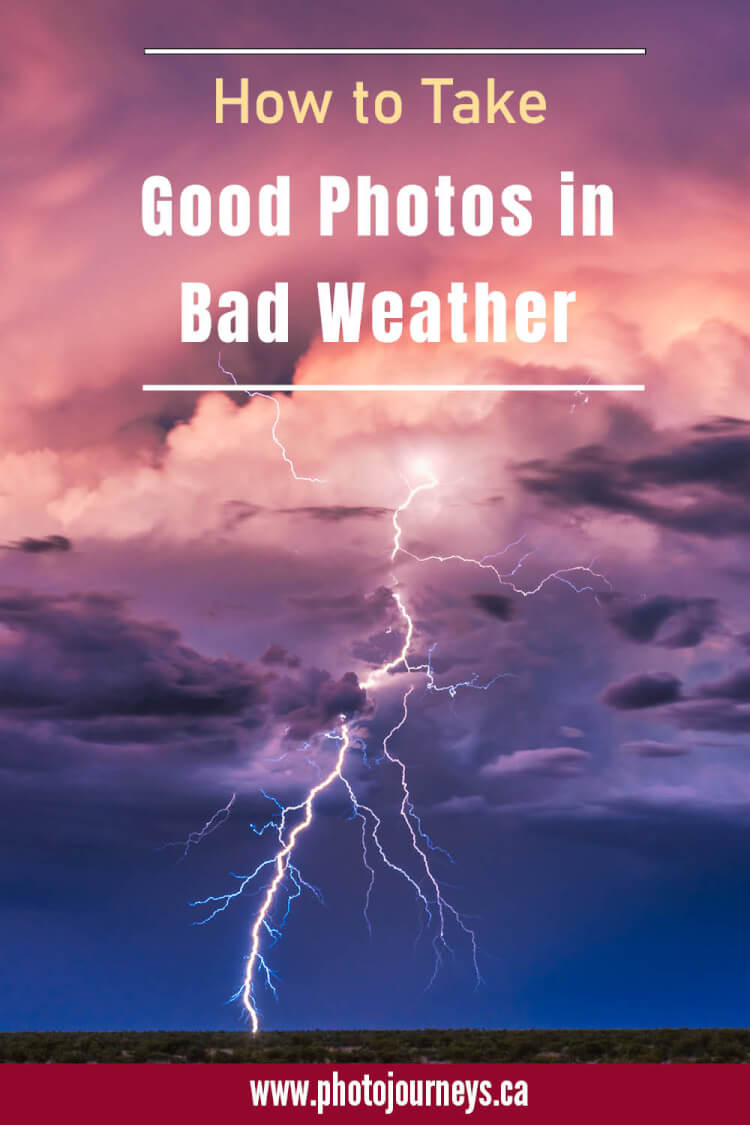
All photos © Robin and Arlene Karpan

Bad weather such as fog, forest fire smoke, and intense rainy downpours can upset our plans, but it can be great for photography. A beautiful landscape on a clear, cloudless day may be nice enough, but nothing special. Add a dramatic sky from an approaching storm and things get cranked up a notch.
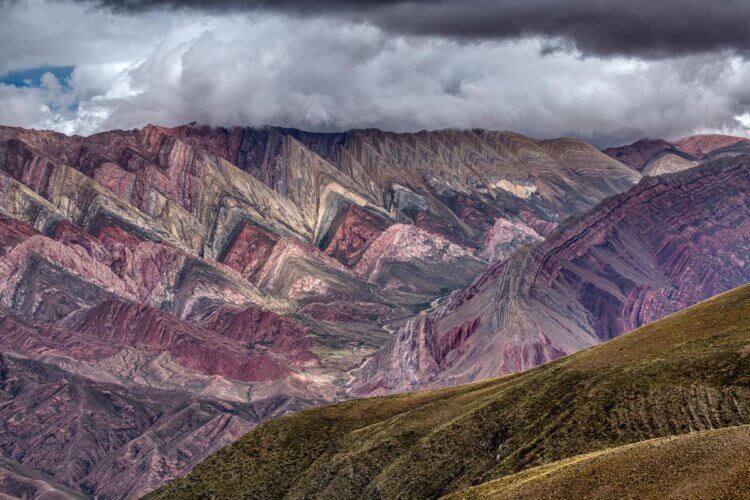
An impressive sky can even turn an otherwise ordinary-looking scene into something worth photographing. A good example is the opening photo, where the landscape itself is quite non-descript and all of the drama comes from the stormy sky. Some of our favourite photos have come from “bad” weather.
Storm clouds
Canadian prairie skies are famous for putting on a show when storms are forming. This pre-storm period is an ideal time to capture breathtaking cloud formations while staying out of harm’s way.
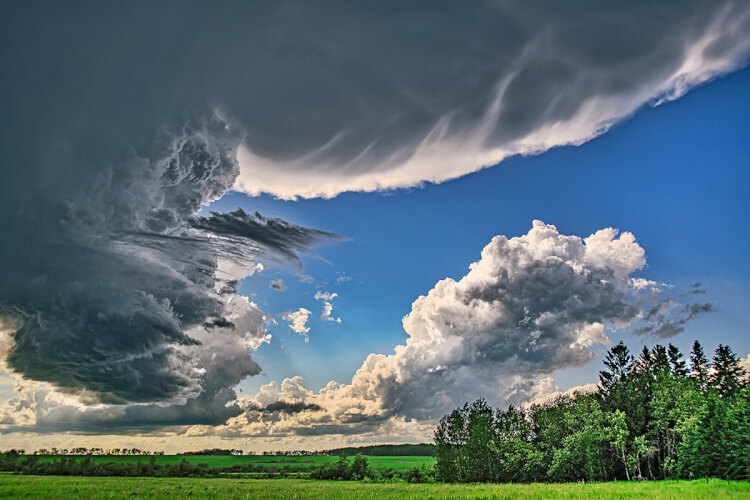
An easy though impressive formation to photograph is Mammatus clouds because they tend to last more than a few minutes. These bubble-looking clouds form when cold air sinks. Mammatus clouds are often associated with storms but are not threatening by themselves.
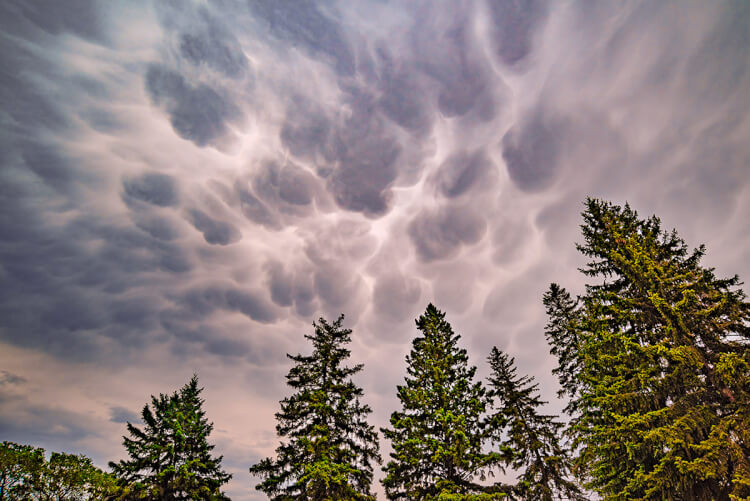
A magical time is the calm before the storm when the sky turns almost black from a coming storm but there is still some sunlight hitting part of the scene. The contrast between light and dark can often be dramatic.
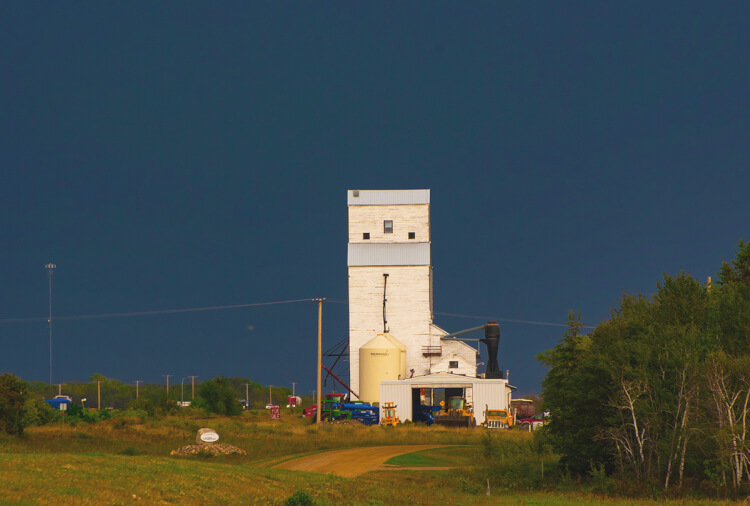
After the storm
The aftermath of a storm can be just as rewarding, especially when the sun suddenly comes out after a rain. The quality of the light at that time can be spectacular. These are also prime rainbow conditions. Rainbows are often fleeting so it’s best to get your camera ready as a rainstorm wraps up. We almost always use a polarizing filter to photograph rainbows. It helps to cut through the haze and makes colours more distinct and saturated.
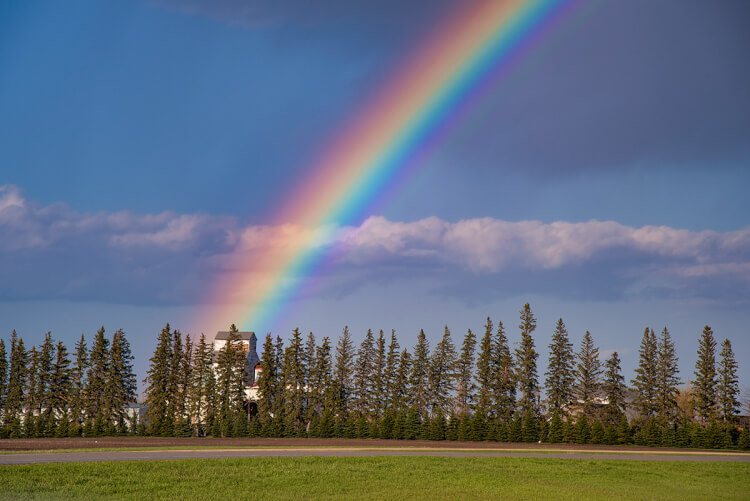

Lightning
Lightning is one of the more dramatic weather events, as well as being potentially dangerous. With a telephoto lens, you can photograph from a safe distance. Photographing from inside a building, or even a vehicle, provides a bit more protection.
Capturing a lightning strike isn’t easy during the daytime. Usually, a specialized lightning trigger is necessary. We have a much better chance at night or late dusk when we can do long exposures, and capture lightning with almost any camera and without specialized equipment.
How long an exposure depends on how dark it is, but around 20 to 30 seconds is a good starting point when it is reasonably dark out. To take the longest possible exposure, set your camera on its lowest ISO setting, and choose a small aperture setting, such as f/16. Since conditions vary, you may have to experiment with different exposure lengths. The goal is to have a photo that is still a bit on the dark side from the ambient light. We want most of the light to be provided by the lightning.
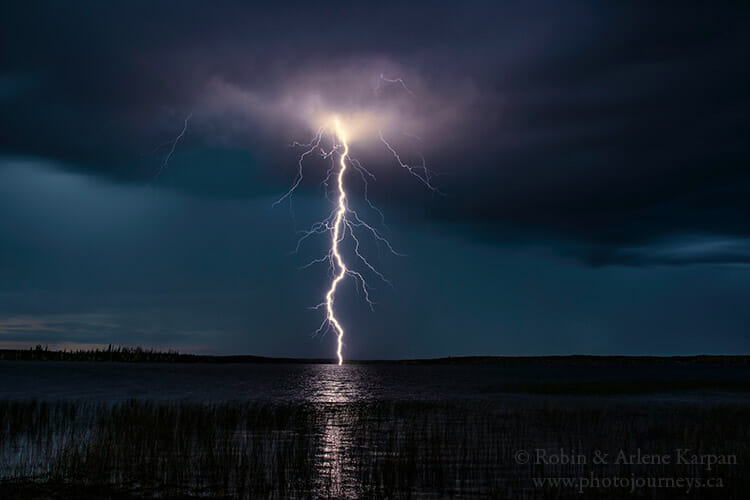
With this technique, we don’t have to time the exact moment of the lightning. As long as it strikes any time during the exposure, the lightning will be recorded. That’s why a longer exposure increases the chances.
If your camera has the capability, set it to take a series of exposures. Many newer cameras have built-in intervalometers that can be set to take several photos one after another. That way, you don’t have to keep pressing the shutter. Chances are that most of the frames will not have lightning, so the more photos you take, the better the odds of getting a lightning bolt on one or more of those shots. Another advantage is that you can take shelter while the camera does its work. Of course, a tripod is essential to steady the camera.
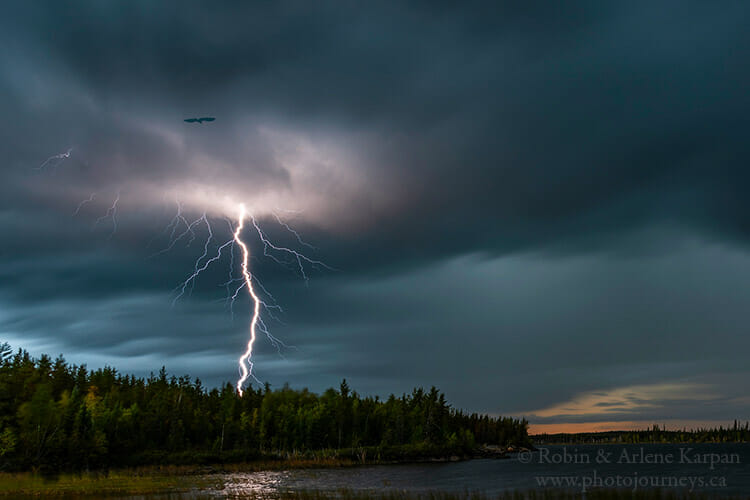
Our favourite lightning photo also had a bird in the frame. A raven was flying by just as the lightning struck. Normally, photographing a flying bird with a 30-second exposure would cause a big blur. But because it was dark, the sudden burst of light froze the motion of the bird, in much the same way as we freeze the action using a camera flash. We were fortunate that this image won recognition in a couple of international photography competitions. We wrote about the details of getting that shot in this post.
Fog
Fog gives the landscape more of a calm, mystical look. Photography in the fog is less about distinct details and more about mood. Early morning is prime time, and it’s often best to shoot into the sun to get the most interesting play of light through the fog.
The camera’s auto-focus may have a difficult time finding less distinct objects so don’t rely on it entirely when the fog is quite thick. Sometimes it is better to switch to manual focus. Camera exposure meters also get fooled by light conditions in fog. Usually, we have found that it is necessary to add exposure compensation, sometimes up to a full stop. However, conditions will vary so take a couple of shots, look at the results, and then adjust exposure as needed.
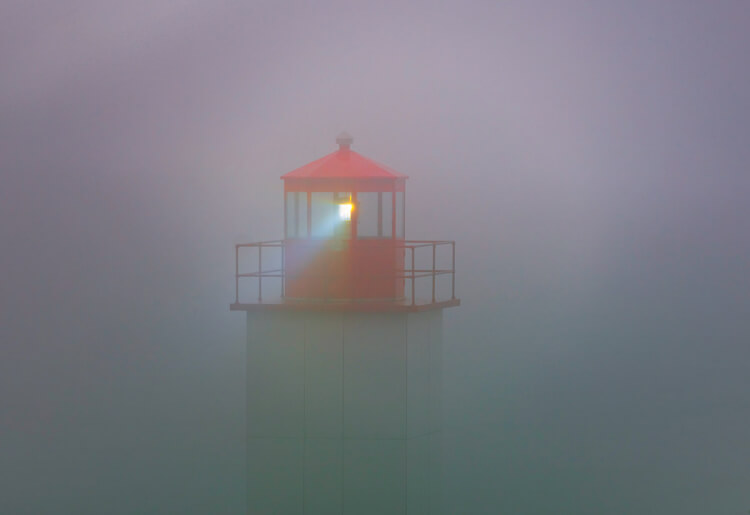
Forest fire smoke
Recently, we have been faced with a huge photography challenge, at least in our part of the world, with forest fire smoke making even attractive landscapes blah-looking. Smoke can sometimes look similar to fog, giving an ethereal look to the landscape. The best opportunities often come with the rising or setting sun or moon, which can appear eerie blood-red when filtered by smoke.
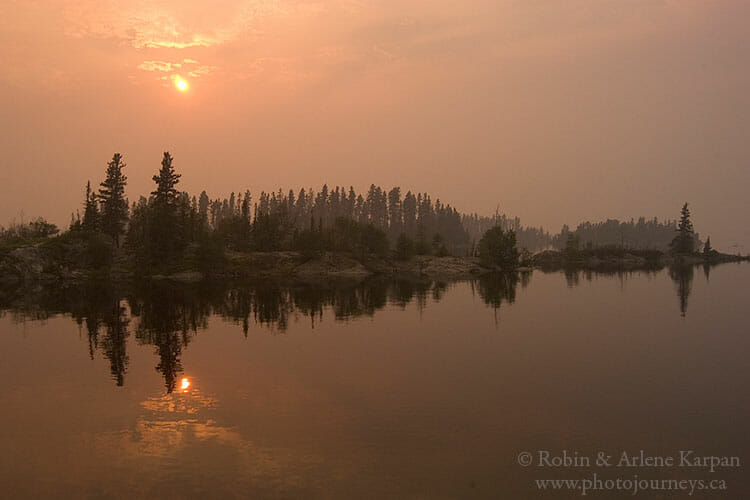
Another of our favourite photos was caused by smoke. We went to Foam Lake Marsh in eastern Saskatchewan, a major waterfowl staging area, intending to photograph the fall migration. We camped overnight to be there for sunrise, but by morning the wind had shifted, bringing in forest fire smoke so thick that we could barely see the lake. Thinking that this was a lost cause, we got ready to leave. But the rising sun shining through the thick smoke turned an other-worldly reddish-orange, like something out of a science fiction movie. To top it off, a flock of sandhill cranes flew across the ghostly sun.
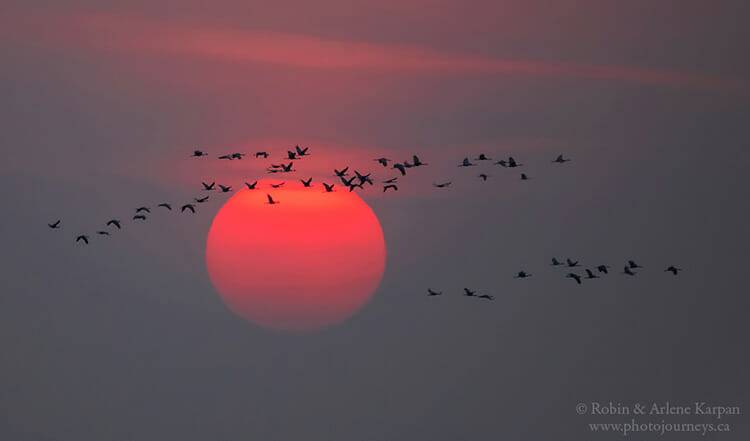
With photography, there’s always a Plan B. So when the weather changes for the worst, don’t pack your camera away but instead embrace the possibilities.
Other articles on photography that you might enjoy on Photojourneys
- How shooting in RAW gives you better control over your photo content
- Using a telephoto lens for landscape photography
- Discover the benefits of using Auto ISO for wildlife photography
- Some tips to consider to improve your bird photography
- Experiment with photographing abstract patterns in nature
SUBSCRIBE to Photojourneys below
Feel free to PIN this article on Bad Weather Photography for later.
